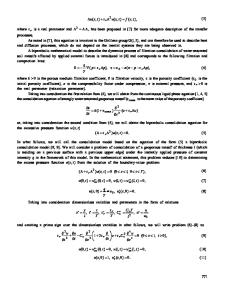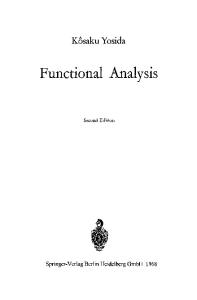Some Nonlocal Boundary-Value Problems for the Biparabolic Evolution Equation and Its Fractional-Differential Analog
- PDF / 134,121 Bytes
- 9 Pages / 594 x 792 pts Page_size
- 99 Downloads / 377 Views
SOME NONLOCAL BOUNDARY-VALUE PROBLEMS FOR THE BIPARABOLIC EVOLUTION EQUATION AND ITS FRACTIONAL-DIFFERENTIAL ANALOG
UDC 517.9:519.6
V. M. Bulavatsky
Abstract. For the biparabolic partial differential evolution equation and its fractional differential generalization, statements are made and closed-form solutions of some boundary-value problems with nonlocal boundary conditions are obtained. Variants of direct and inverse problem statements are considered. The mathematical formulation of the inverse problem involves the search, together with the solution of the original integro-differential equation of fractional order, of its unknown right-hand side as well, which functionally depends only on the geometric variable. Keywords: biparabolic evolution equation, fractional-differential analog of biparabolic equation, nonlocal boundary-value problem, inverse problem, biorthogonal systems of functions. INTRODUCTION In the classical mathematical theory of thermal conductivity based on the linear parabolic heat conduction equation ö æ¶ (1) L1 u º ç - k 2 D ÷ u( x, t ) = 0 , ø è ¶t where u is temperature, x Î E n , D is the Laplace operator, k > 0 is a physical constant, rigid constraints are also imposed on the processes such as infinite velocity of propagation of perturbations and linear dependence of the flow on field gradient as well as energy on temperature [1–3]. Violation of these conditions does not allow us to obtain a sufficiently correct description of the dynamics of heat and mass transfer processes within the limits of the mathematical model and leads to a number of well-known paradoxes [2–4]. To describe processes with a finite velocity, some authors proposed a hyperbolic equation that takes into account relaxation of thermal flow [3, 4]; however (as is mentioned in [5]), replacement of Eq. (1) with a hyperbolic equation is difficult to explain from the group-theoretic point of view since all the nonstationary equations that include second derivatives with respect to time are non-invariant with respect to Galilean transformations. Lack of the respective symmetry properties of the hyperbolic heat conduction equation means that it does not reflect the main physical conservation laws [5]. In this connection, one natural generalization of Eq. (1) was mentioned in [5, 6]:
Lu º a 1 L1 u + a 2 L2 u = 0, L2 = L1 L1 ,
(2)
where a 1 and a 2 are real parameters. The last equation is invariant with respect to the Galilean group G(1, 3) ; therefore, it can be used to describe processes of diffusion type irrespective of the inertial systems where they are observed [5, 6]. According to [5], Eq. (2) is called biparabolic; for a 1 = 1 and a 2 = 0 , it coincides with the classical Fourier equation. Biparabolic equation was used V. M. Glushkov Institute of Cybernetics, National Academy of Sciences of Ukraine, Kyiv, Ukraine, [email protected]. Translated from Kibernetika i Sistemnyi Analiz, No. 5, September–October, 2019, pp. 106–114. Original article submitted October 1, 2018. 796
1060-0396/19/5505-0796 ©2019 Springer Science
Data Loading...











